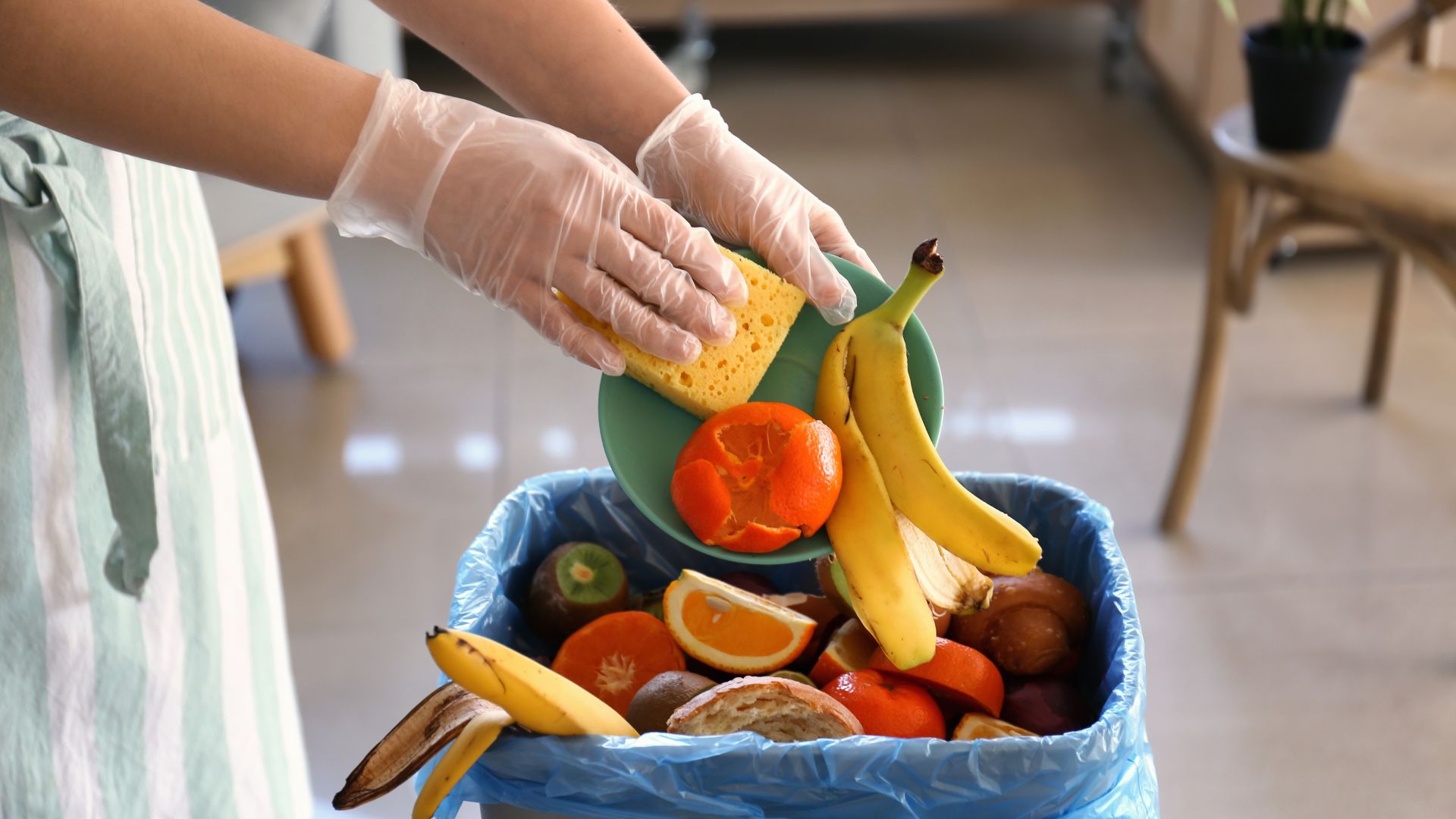Shockingly, billions of pounds of perfectly good food is wasted each year while 925 million people are starving in developing as well as first-world countries. If we reduce food waste, we can nourish those in need, reduce the environmental impacts of methane produced by decomposing food, stop wasting the resources used to grow unused food and save the financial value of those resources. It’s doable!
Hopeful country representatives meet annually at the UN Climate Change Conferences/Climate Conferences of the Parties (COP) to create and implement policies to direct food to those who need it rather than sending it to landfills that are overflowing with thousands of tons of municipal solid waste.
Each of us has to do our part to end per-person waste, and it’s easy to curb personal food waste. Buying a compost bin or creating a compost pit in your yard is a sustainable way to dispose of small food scraps. Also, try not to buy excess food when shopping and use parts of meals that we don’t eat in other recipes or snacks. We need to focus on reducing food waste.
Huge amounts of food are also lost when establishments throw away uneaten portions of meals. 35% of food is tossed in the trash by supermarkets, hospitals, hotels, restaurants, and other businesses with food service. Fortunately, programs have been founded to recover food waste. And not a moment too soon!
Let’s take a look at some food waste statistics and strategies to fix the problem.
Top 10 Fascinating Food Waste Statistics
- 1.3 billion tonnes of food, a third of global production for humans, is wasted yearly.
- In 2021 the US ranked third globally in per capita household food waste.
- Annually, around 133 billion pounds of food is estimated to go to waste in the US.
- Bread ranks first, wasting over 240 million slices yearly.
- About 12% of fruits and vegetables are discarded at retail
- Over 80% of Americans waste edible food due to misunderstood expiration labels.
- An average American family of 4 waste around USD$1,500 on food annually.
- In the US, organic waste emits like 37M cars or 42 coal plants.
- Food waste causes food insecurity; 1 in 10 Americans experience it.
- 8%-10% of worldwide greenhouse gas emissions stem from food waste.
What Is Food Waste?
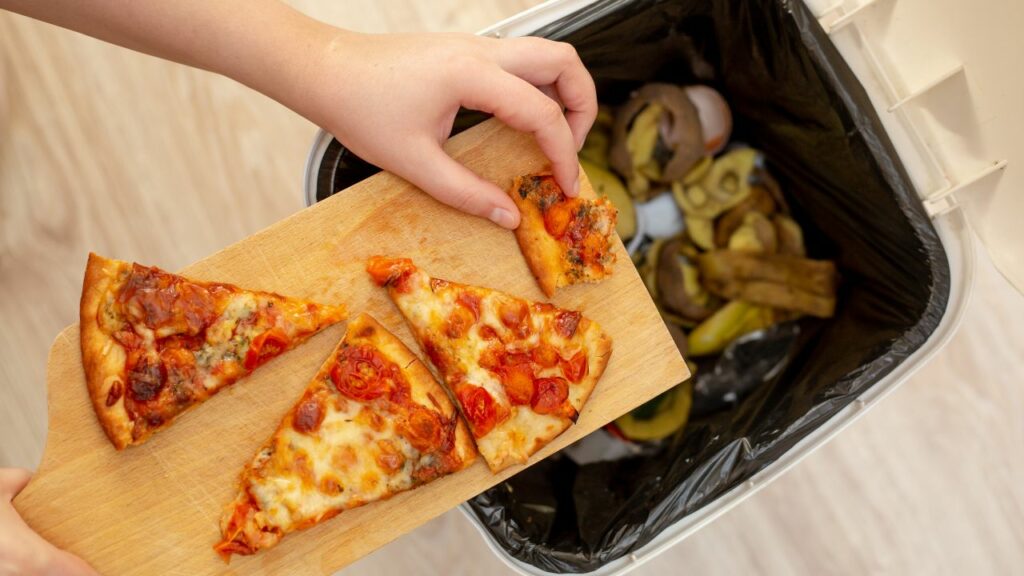
Food waste and food loss occur at retail and consumer levels throughout the supply chain process, from food production to distribution by retailers and at the consumer level for human consumption. Loss can happen because of inadequate climate control, mold, or pests. It can occur while cooking (throwing out stems, etc.) and anytime that people toss fresh food in the trash.
Food Waste Statistics
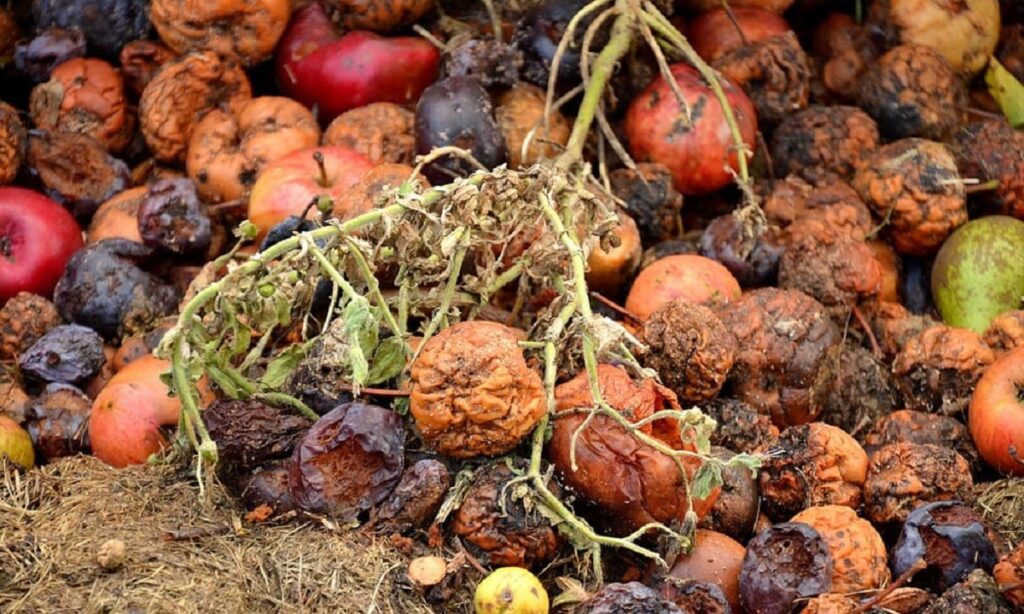
Food waste statistics are staggering and really don’t have to be. Now that world governments are concentrating on global hunger and food waste, we can make significant differences with food that would have helped feed families in the past and ensure that it does now.
1.3 Billion Tonnes of Food, a Third of Global Production for Humans, Is Wasted Yearly. (FAO)
An astounding one-third of perfectly good food, or 2,866 tons, is wasted annually. Some of that is from food loss in the production and transportation cycle. The good news is that the potential to feed the world is there, and we’re preparing to harness it.
Over 7 Billion People Worldwide, 925 Million Experiencing Starvation (SWF)
Wasting an enormous amount of food while 925 million people are starving is tragic. As the world population increases, there will be more food needed.
Wasting This Much Food Also Wastes 25% of Its Production Water, Enough for 9 Billion People’s Daily Use (Earth)
Water waste is also significant because 25% of all the water is wasted when we throw out good food. That water is desperately needed by the 9 million people without drinkable water. By conserving water and not wasting it, we can share it with those who need it.
Some countries are organizing programs that aid nations with their water needs. The Food Security Innovation and Mobilization initiative in Peru, Bolivia, and Burkina Faso helps residents access groundwater resources through the use of new technologies like extracting water through hydroponic greenhouses and hand pumps.
In Canada, the government is allocating $6 million to WaterAid Canada for a project in Burkina Faso, Liberia, Sierra Leone, and Pakistan, which helps women and adolescent girls wash in school and health institutions when menstruating.
In 2021, the US Ranked Third Globally in Per Capita Household Food Waste, Which Is 19.4 Million Tons, After China and India (UNEP)
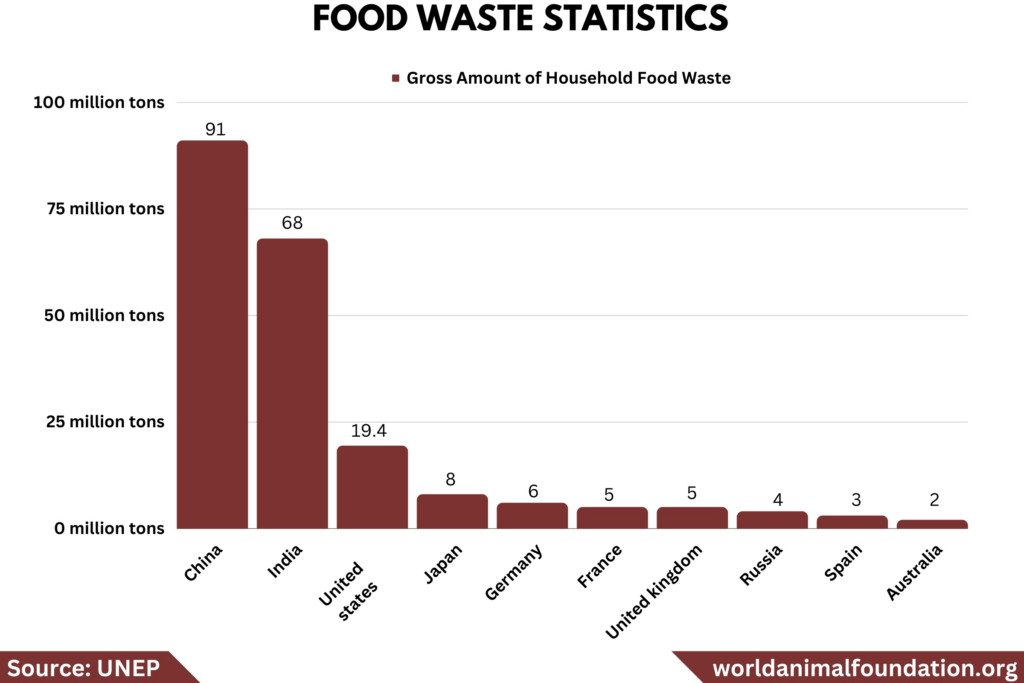
The US’ food waste totals 19.4 million tons of food per household, making it the third largest industrial emitter after China and India.
Alarmingly, Nearly 40% of All Food in the U.S. Is Thrown Away (NRDC)
It’s shameful that the US wastes almost 40% of its food when there are so many people starving, and all the resources and other inputs used to produce that food are also wasted.
Inedible food like banana skins, bones, and egg shells that are not for human consumption can be used as animal feed (don’t worry, regulations ensure that it’s safe), bioenergy, clothing, bioplastics, worm castings, compost, and more.
Lost or Wasted Food in Latin America Could Feed 300 Million People (FAO)
Latin America’s discarded food could give sustenance to 300 million people. Fortunately, the Community of Latin American and Caribbean States (CELAC) is working on an Action Plan for Food and Nutrition Security and the Eradication of Hunger 2025. Hopefully, they will make great progress.
Agricultural Irrigation Uses 70% of Global Water and Over 40% in Many OECD Nations (OECD)
70% of global water is used for agriculture. Many Agricultural Irrigation Organization for Economic and Cooperative Development (OECD) countries use 40% of global water for agriculture.
Food Waste Facts
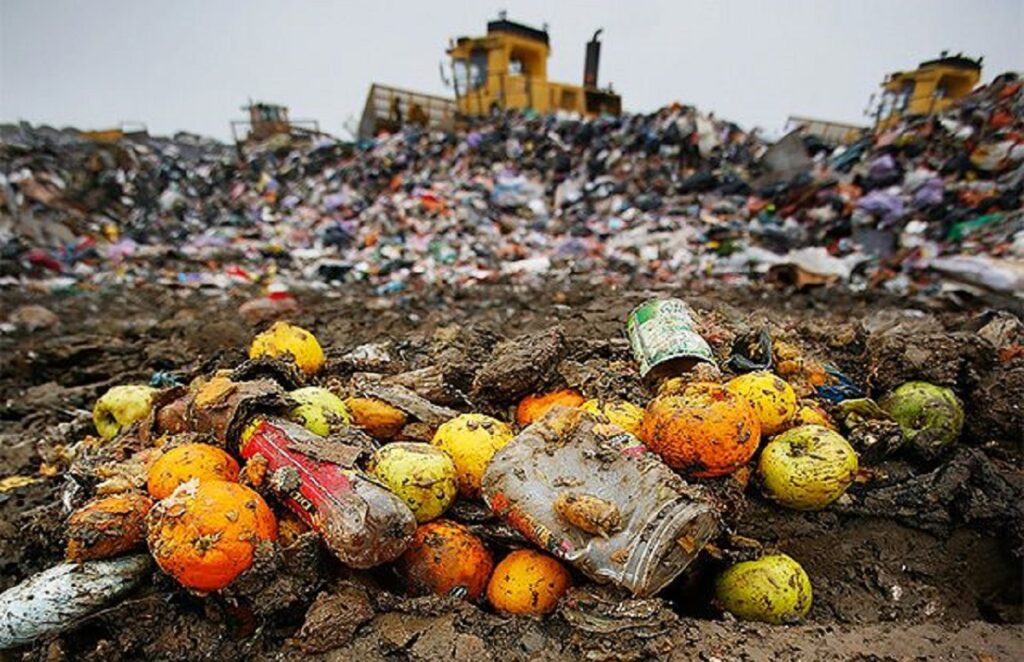
Industrial Food Production Harms the Environment and Can’t Sustain Global Growth, Which Is Expected to Hit 9.8 Billion in 2050 (UN)
The UN wants to improve agricultural and food systems to enhance the livelihoods and health of people and produce healthier ecosystems. That means using less chemicals, energy, and capital to produce more food in 2050 to feed 9.8 million people.
Food Waste in the U.S. Is Equivalent to Discarding 130 Billion Meals and Wasting Over $408 Billion Worth of Food (FA)
These food waste statistics are horrifying, but last year, the Feeding America network and its partners rescued 3.6 billion pounds of groceries. An increasing number of organizations are formulating policies to rescue food and decrease food waste. The more groups working on the mission, the sooner we can help people lacking food and water.
A Total of 38% of Grain Products Are Lost Annually Throughout the United States (Refed)
World Wildlife Foundation (WWF) produced “No Grain Left Behind,” a film about corn and soybean losses because the two are common in the US and make up 22% of all agricultural cropland. Some companies, like Bob’s Red Mill, are focusing on decreasing grain waste. Bob’s fuels its vehicles with renewable diesel, reducing 80% of carbon emissions!
Other foods on top of the food waste list are seafood (50%), fruit and vegetables (52% ), meat (20%), and of milk (20%).
Bread Ranks First, Wasting Over 240 Million Slices Yearly (River)
Over 240 million slices of bread are wasted, making it the highest food waste item in the US.
Milk Comes Next, with About 5.9 Million Wasted Glasses Yearly (River)
Leftover milk can easily be used in smoothies or recipes like barley or rice pudding, etc. As with any extra food/beverage, we just need to think of a way to utilize it. 5.8 million potatoes are discarded each year. Who would waste a delicious potato?!
Over 80% of Americans Waste Edible Food Due to Misunderstood Expiration Labels (Senior Dining)
People throw out perfectly good food they think has expired, but “Best if Used By” means the food/drink may not taste the same but is okay to eat. “Use By” refers to perishable foods that should not be consumed after the date.
Europe Produces 88M Tonnes of Food Waste/Year (20% of Total) with Costs at 143 Billion€/Year. (European Union)
Roughly 20% of food in the EU ends up lost or wasted; even worse, 33 million people cannot afford a healthy meal every other day.
Food Currently Wasted in Europe Could Nourish 200 Million People (FAO)
The US isn’t the only country throwing out lots of food. At the 2022 United Nations Climate Change Conference, attending countries agreed to cut per-capita global population food waste in half. That’s consumers’ waste as well as food wasted during the production and retail processes.
Food Waste in America
Annually, Around 133 Billion Pounds of Food Is Estimated to Go to Waste in the US (USDA)
A USDA study revealed that food waste is estimated at 30-40% of the food supply. The total estimated value of the food waste was $161 billion in 2010. USDA’s Economic Research Service found 31% of food waste and food loss at the retail and consumer levels.
Daily, Over 34 Million Americans, Including 1 in 8 Children, Grapple with Hunger (MFH)
10% of households were food insecure in 2021, and food banks are only a temporary solution. 46% of students from low-income homes report that hunger affects their concentration in school. Ending inequities is the only way to lift the food insecure.
Home Food Waste in the US Constitutes 39% of Total Food Waste (FA)
Although some food waste occurs during the production of food and at supermarkets where “ugly” produce may be thrown out, 39% of total waste happens in households.
In the US, 80 Million Tons of Food Was Wasted in 2021 (Refed)
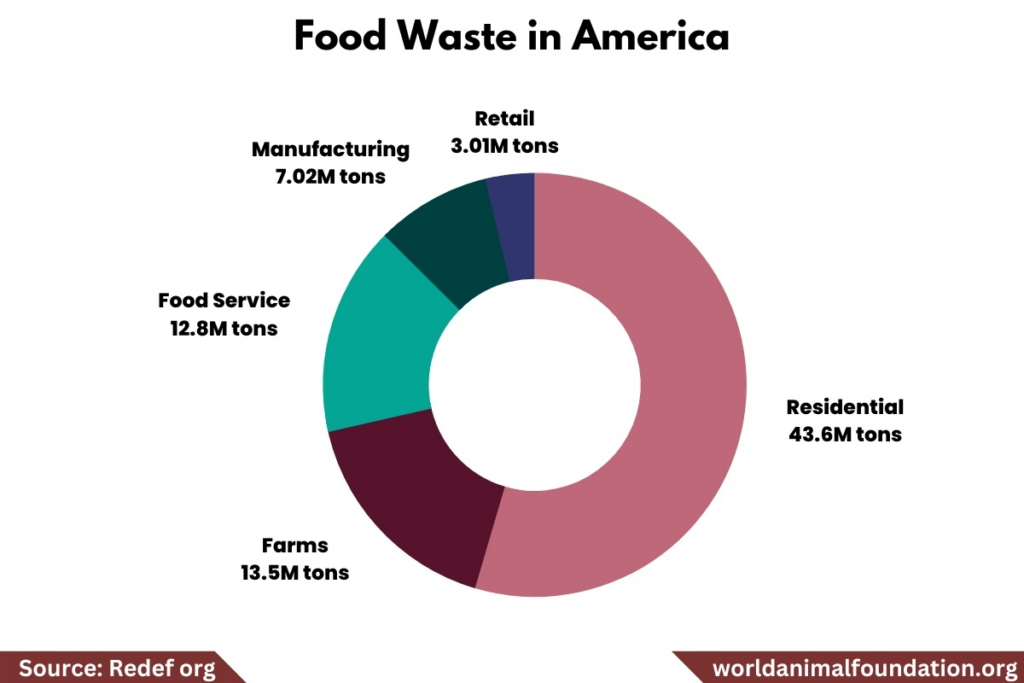
91 million tons of “surplus food,” defined as all food that goes unsold or uneaten and contributes almost 6% of our annual GHG – equal to driving 83 million passenger vehicles for one full year.
Each Year, the Average American Discards Around 325 Pounds of Food (RTS)
The average American household of four throws out $1,600 a year in produce, which is very upsetting when people are starving around the world, and one in eight Americans is food insecure. That’s $16,000 every decade. It would be great to save all that money, and all we have to do is not buy excessive food, repurpose food we don’t eat, and compost.
About 12% of Fruits and Vegetables Are Discarded at Retail Due to Appearance Standards (NRDC)
It’s silly to waste misshapen fruits and vegetables, and people are beginning to realize that. Farmers’ markets allow vendors to sell them.
California recently passed a bill offering growers a tax credit for donating excess produce to state food banks — a practice that Colorado, Arizona, and Oregon also have. Whether they are sold or become food donations, both are much better than being hurled on top of one of the country’s landfills.
Companies called Imperfect Foods and Misfits sell and deliver food that would otherwise be relegated to the trash.
28% of Vegetables and Fruits Are Wasted at the Consumer Level. (NRDC)
The statistic reveals that a significant portion of vegetables and fruits are wasted at the consumer level. This wastage occurs for various reasons:
- Over-purchasing
- Improper Storage
- Preference for Aesthetics
- Expiration Dates
- Lack of Meal Planning
- Leftovers
- Inadequate Awareness
Food Waste Dominates US Landfills and Incinerators, Constituting 24% and 22%, Respectively (EPA)
The EPA estimates that food waste is the most common material in landfills and incinerators in the United States, with 24 and 22% landfilled and combusted municipal solid waste. By reducing that waste, we can help food insecure populations to have food, address climate change, save money, and recoup the resources that are used to produce the food that’s not eaten.
Annually, Discarded US Food Is Valued at Roughly $161 Billion to $218 Billion (USDA, Earth)
A lot of money and food waste occurs in America, which ranks third in food waste after China and India. We waste $161 billion to $218 billion and need to reduce food loss as well as food waste.
The United States Department of Agriculture reported that the amount of discarded food in the country increases by 25% during the holidays due to unsold supplies at food stores as well as uneaten food leftovers. On Thanksgiving, despite efforts to make turkey sandwiches and turkey soup for days after the feast of so much food, a lot of edible turkey meat is thrown out.
An Average American Family of Four Squanders Waste Around $1,500 on Food Annually (USDA)
Earth.org says that food waste in America has tripled in the last 50 years. In addition to the fact that food should be redirected to those who need it, we are wasting three times as much money and resources, producing food waste and contributing to climate change thrice more.
Causes of Food Waste

Feeding America reports that food waste happens when uneaten fresh food:
- Is thrown in the trash by people, retailers, and restaurants
- When crops are not removed from the fields due to low crop prices or too many of the same crops
- Due to harvesting, manufacturers during manufacturing, processing, storing, packers, shippers, spoilage, and transportation problems
- If retailers reject the appearance or color of food
Impact of the Food Waste

In the US, Organic Waste Emitted Like 37M Cars or 42 Coal Plants (EPA)
Food waste results in wasted resources such as water, agricultural fields, water, pesticides, fertilizers, and energy. Wasted food also contributes to GHG and climate change, uses and fouls freshwater resources, creates a loss of biodiversity and ecosystem services, and degrades soil and air quality.
This consumption of resources is staggering, with over 50 million households’ worth of water and energy required. In the United States, the production of all plant-based foods necessitates the use of around 21 million tons of chemical fertilizers annually to support high crop yields.
To put this into perspective, the land allocated for agriculture is equal in size to both California and New York combined, spanning nearly 2.3 billion acres.
Environmental Impact of US Food Waste
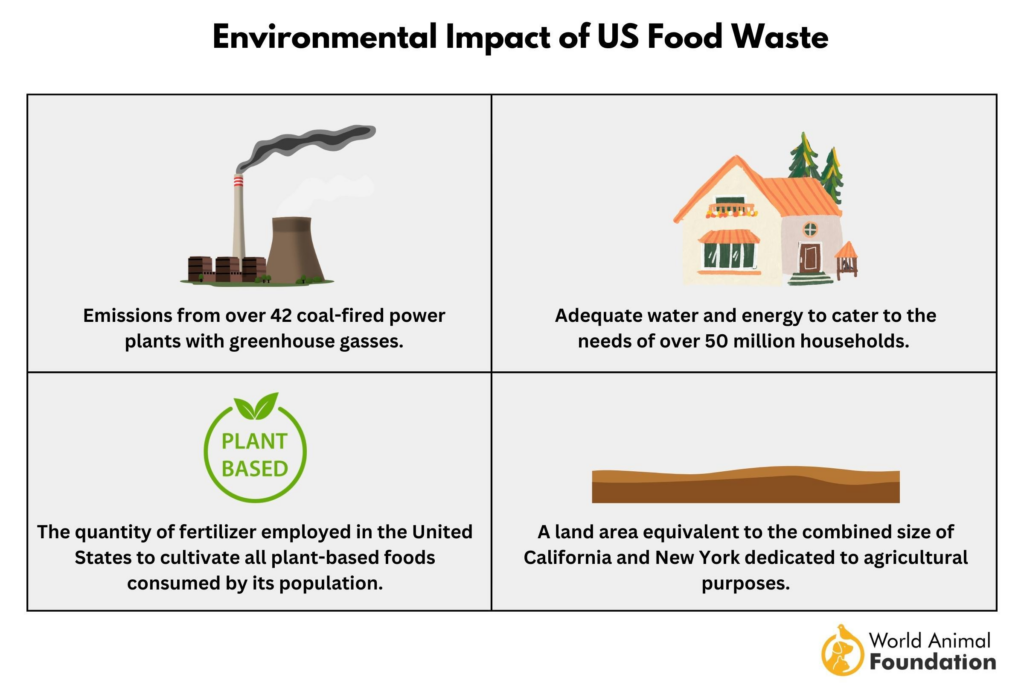
Food Waste Harms Resources, Surplus Food Could Blanket 80M Acres, Much of California (Redfed)
ReFed has 42 food waste solutions that feature educational campaigns for consumers, food service outlet waste tracking, standardized date labels, and upcycling. The organization says it would cost $18 billion per year and would benefit the US $74 billion, reduce GHG, save 4.3 billion meals, and create 60,000 jobs.
Food Waste Causes Food Insecurity; 1 in 10 Americans Experience It (Refed)
In 2021, 10.2 percent of households were food insecure at some time during the year, including 3.8 percent (5.1 million households) with very low food security. It was about the same in 2020 at 10.5 percent. It’s not just in developing countries; there’s plenty of food insecurity right here.
Roughly 8% to 10% of Worldwide Greenhouse Gas Emissions Stem from Food Waste (EPA)
Food breaks down in landfills and releases harmful GHGs like methane emissions are released into the atmosphere — which is more potent than carbon dioxide. About 8-10% of the world’s GHGs are caused by food waste. Food waste emits almost as much GHG as the US and China. The Food and Agriculture Organization (FAO) of the United Nations reports that 3.6 tons of CO2 are emitted into the atmosphere globally.
Food Waste Causes Water Scarcity; Urban Water Scarcity May Double to 1.7 — 2.4 Billion by 2050, from 930 Million in 2016 (UNESCO)
Long and extreme droughts have overburdened ecosystems, with dire consequences for both plant and animal species. Sadly, if food waste continues, water scarcity could be 2.4 billion in 2050. It was 930 million in 2016.
We need to establish strong international policies to prevent the global water crisis from getting worse. Water is essential and must be shared equitably and managed sustainably.
Around 80 Million Acres of Habitat Turned into Farmland for Wasted Food (Biological Diversity)
Approximately 80 million acres of land are used to produce food in the US — 35 times the size of Yellowstone National Park.
50,000+ Sea Turtles Killed Annually by US Shrimp Trawling, Part of Wasteful Seafood Industry Impact (Biological Diversity)
10-12% of commercial fisheries‘ catches are bycatch, and shrimp trawling can grab as much as 64% bycatch. This can add up to 714 million pounds of wasted fish, sea turtles, dolphins, whales, and other marine animals caught in the seafood industry’s nets annually. Worldwide, 40% of catches may be wasted bycatch.
Food Waste Emissions Surged 300% in 50 Years, Now a Key Contributor to Climate Change (Biological Diversity)
If our dietary and waste habits continue, food waste gases may increase another 400% by mid-century.
Benefits of Reduction of Food Waste
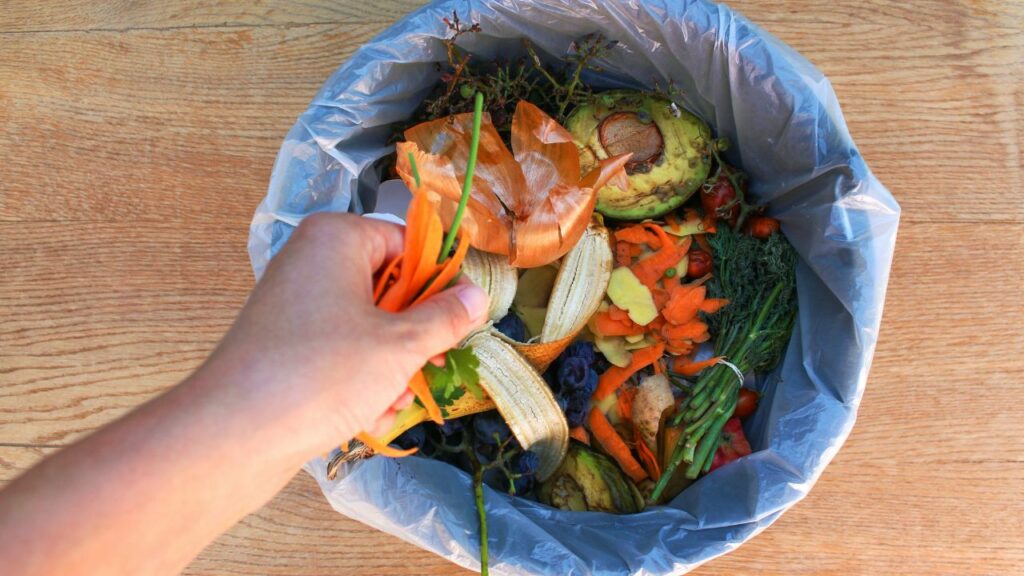
We Can Feed Today’s Population and the Upcoming 2.5 Billion with Our Food Production (National Geographic)
National Geographic reports that we can feed 2.5 billion people by making four changes: eat more plant-oriented diets, use resources more efficiently, grow more on the farms we have, and stop increasing agriculture’s footprint.
A Quarter of Saved Wasted Food Globally Could Feed 870 Million Hungry People (FAO)
Food and Agriculture Organization (FAO) stated that saving a quarter of lost or wasted food could end global hunger. It’s possible if we all pitch in.
Eliminating Avoidable Food Waste Could Lead to Savings of Over £700 ($870) Annually for UK Families Each Year (WRI)
A financial reward for decreasing emissions of decomposing food waste and all the resources involved in their production! That’s motivating!
Approximately Saves $1,800 for US Families Each Year (WRI)
Sounds like a great idea! It’s a win-win situation.
Cutting Consumer Food Waste by 20%-25% by 2030 Could Save $120-$300 Billion/Year Globally (New Economy)
By eating more of their purchases, people will decrease how much they spend on food.
Sustainable Food Efforts Could Create $2.3 Trillion/Yr by 2030 in 14 Key Opportunities (Report)
Business & Sustainable Development Commission created Sustainable Development Goals to create $2.3 trillion per year by 2030. They promise to deliver a 7-fold return on investment, which is $320 billion per year.
FAQs
How Much Food Is Wasted in the US?
The US’ annual food waste is 119 billion pounds.
How Much Food Do Humans Waste Every Year?
1.3 billion tons of food waste and food are wasted annually.
What Percentage of Food Produced in the US Goes Uneaten?
Around 160 billion pounds of food produced is wasted, and that’s 35% of our food supply — over one-third.
How Much Food Does the Average Global Household Waste Each Year?
Americans waste 1.25 million pounds of food & more than $408 billion on food annually.
What Percentage of Our New Restaurants Donate Their Leftover Food?
A decade ago, only 2% of restaurants sent leftover food waste to those in need, although some gave it to employees. Restaurants tend to cook too much food and have extra. In recent years, apps and organizations have been popping up that help restaurants find food banks and pantries that need excess food, thus providing progress in food recovery. Unavoidable waste is consumed through recovery.
Feeding America has a program called MealConnect that matches grocery stores, hotels, restaurants, sports venues, businesses, and more establishments to food pantries and food banks. They’ve rescued 3 billion pounds of food.
In the United States, the Biggest Component of Household Trash by Weight Is?
Food waste is the largest component of household trash.
Wrap Up
The Environmental Protection Agency (EPA) and the U.S. Food and Drug Administration (FDA) are collaborating to improve food management by coordinating and communicating with federal agencies to educate the public about the importance of reducing food loss and waste and the impact that it has on the planet and world hunger. Perfectly good food leftovers can be food donations to those in need.
The organizations have set goals and are changing operations to reduce waste at the retail level because of storage, over-ordering, etc., and at the consumer level.
Their food recovery hierarchy recommends remedying food waste by making food donations to a hunger relief organization, using small amounts of unused food/beverages for a recipe, or recycling food items for animal feed, composting, etc.
The numbers are certainly eye-opening. Reducing food waste is the only way to nourish the world now and as the population grows. Individuals, restaurants, food stores, and everyone in the food industry need to comply with government regulations to reduce food waste, which will ultimately reduce global world hunger and wasted resources.
The good news is that studies have helped organizations develop strategies to reduce food waste, and it can be done, so let’s start a composting bin or pit. It’s time for some food recovery.


